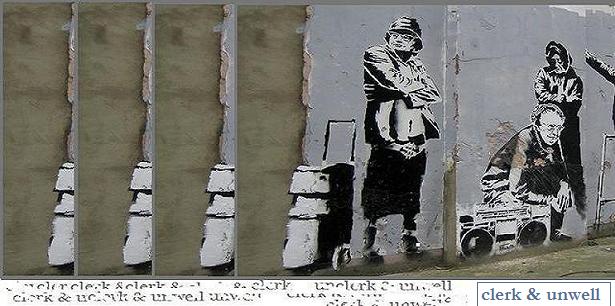"But we should not forget that if the psychoanalytic explanation of hauntedness, of hallucination, if the psychoanalytic theory of specters, in sum, leaves a part, a share of nonverisimilitude unexplained or ratherverisimilar, carrying truth, this is because, and Freud recognizes it himself a bit further on, there is a truth of delusion, a truth of insanity or hauntedness."
As much as I hate to bring in the Viennese quack to this discussion, point raised is a good one. In order to discuss space as encompassed by human beings and spirits, spectres or specters, you must interact with these ideas of delusion; what you perceive as verisimilitude. There is a truth of insanity or hauntedness. I think nowhere do architectural ideas and products of spatial reconstruction trumpet any of this better than the New Acropolis Museum. Of course the picture above is the perfect one to understand the haunted nature of the place, the little distinction between body and specter. Here's another of the exterior which gives shape to the historical precedents for the overwhelming hauntedness this place has brought upon itself.
I feel out of things to say on this issue, certainly I'm not going to take up psychoanalytic theory, so I will only caption the above picture with the following from Kafka:
“Anyone who cannot come to terms with his life while he is alive needs one hand to ward off a little despair over his fate... but with his other hand he can note down what he sees among the ruins."May we all, one day, live above the ruins.
I was remarkably unhappy with my above ending, "may we all, one day, live above the ruins" as if we should strive for such a thing. So I did some more reading and etc etc and came across an apt description of spolia, which is what I believe we would be encouraging with more buildings like the above.
The ambivalent attitude to precious materials and virtuoso craftsmanship is reflected in the way which spolia were used. When exquisite spolia were often placed at the most prominent positions in churches, as well as in reliquaries, it is clear that ancient, pagan material was appreciated but on condition that it was translated into the heterogeneous ensemble of its new Christian context.
This is from Maria Hansen's "The Eloquence of Appropriation", although I must disagree that there is much eloquence in it.
It is only what it is, and we must live with it, musn't hope for it, and must accept it when we all live above the ruins of ourselves.




No comments:
Post a Comment